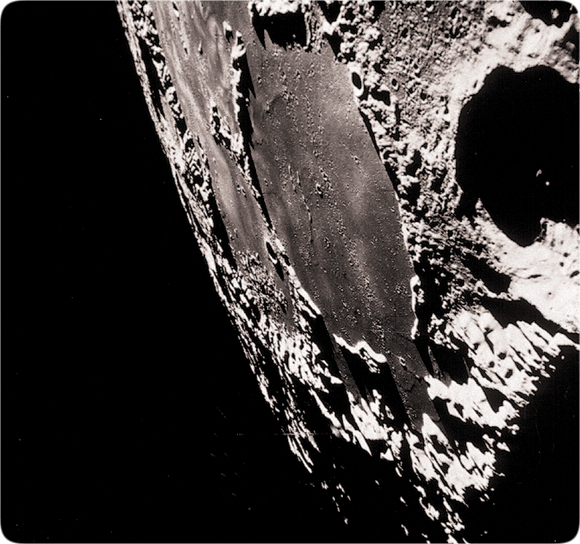Show your support by donating any amount. (Note: We are still technically a for-profit company, so your
contribution is not tax-deductible.)
PayPal Acct:  Feedback:
Feedback: 
Donate to VoyForums (PayPal):
| [ Login ] [ Contact Forum Admin ] [ Main index ] [ Post a new message ] [ Search | Check update time | Archives: 1, 2, 3, 4, 5, 6, 7, 8, 9, [10] ] |
A tall pile of tar will slowly flow downhill, ultimately spreading into a nearly horizontal sheet of tar. Most material, under pressure, “creeps” in this way, although rocks deform very, very slowly.
Calculations show that the growing upward bulges of large crater floors on the Moon should occur to their current extent in only 10,000 to 10,000,000 years (a). Large, steep-walled craters exist even on Venus and Mercury, where gravity is greater, and temperatures are hot enough to melt lead. Therefore, creep rates on those planets should be even greater. Most large craters on the Moon, Venus, and Mercury are thought to have formed more than 4,000,000,000 years ago. Because these craters show no sign of “creep,” these bodies seem to be relatively young.

Figure 32: Young Craters. Large craters on the Moon have high, steep walls that should be slowly slumping and deep floors that should be bulging upward. Little deformation exists, so these craters appear relatively young. Similar conclusions can be drawn for Venus and Mercury.
a. Glenn R. Morton, Harold S. Slusher, and Richard E. Mandock, “The Age of Lunar Craters,” Creation Research Society Quarterly, Vol. 20, September 1983, pp. 105–108.
The above study drew upon the work of Z. F. Danes, which was described as follows:
“The history of a circular crater in a highly viscous medium is derived from the hydrodynamic equations of motion by Z. F. Danes. The variation in shape of the crater in the course of time is expressed as a function of a time constant, T, that involves viscosity and density of the medium, acceleration of gravity, and radius of the crater lip. Correspondence between theoretical crater shapes and the observed ones is good. However the time constant, T, is surprisingly short if commonly accepted viscosity values are used.” Geological Survey Professional Paper 550-A (Washington, D.C.: U.S. Government Printing Office, 1966), p. A 127.
Since Danes work was published, rocks from the Moon have been returned to Earth and their viscosity has been measured. Their values fall in the range of 10^21 to 10^22 poises. According to the Geological Survey paper just quoted, “If viscosities of lunar rocks were around 10^21 to 10^22 poises, the ages of large craters would have to be only 10^4 to 10^7 years.”
Most Scientific Dating Techniques Indicate That the Earth, Solar System, and Universe Are Young.
For the last 150 years, the age of the Earth, as assumed by evolutionists, has been doubling at roughly a rate of once every 15 years. In fact, since 1900 this age has multiplied by a factor of 100!
Actually, most dating techniques indicate that the Earth and solar system are young—possibly less than 10,000 years old.
[ From “In the Beginning” by Walt Brown]
[
Next Thread |
Previous Thread |
Next Message |
Previous Message
]
|
Forum timezone: GMT-8 VF Version: 3.00b, ConfDB: Before posting please read our privacy policy. VoyForums(tm) is a Free Service from Voyager Info-Systems. Copyright © 1998-2019 Voyager Info-Systems. All Rights Reserved. |